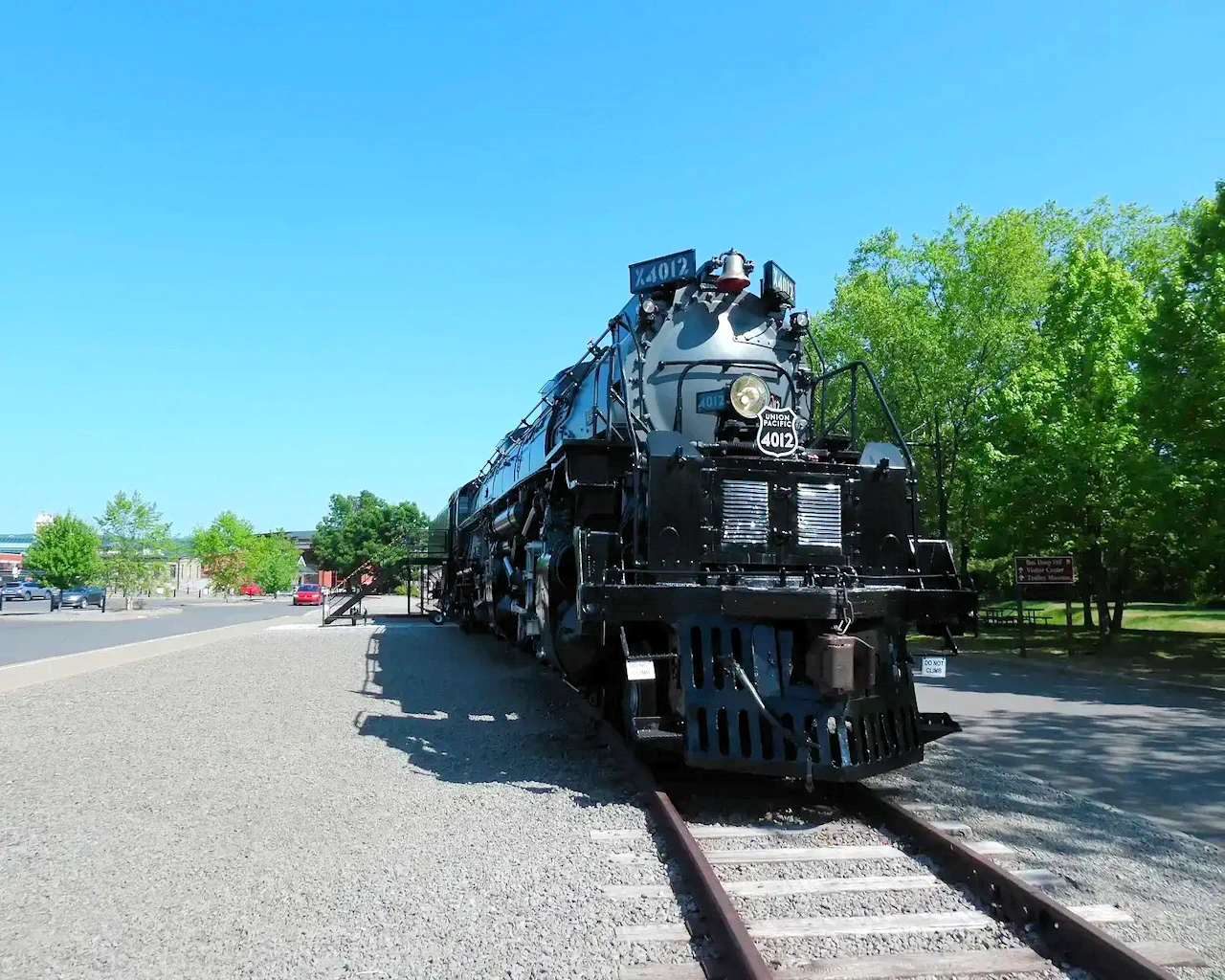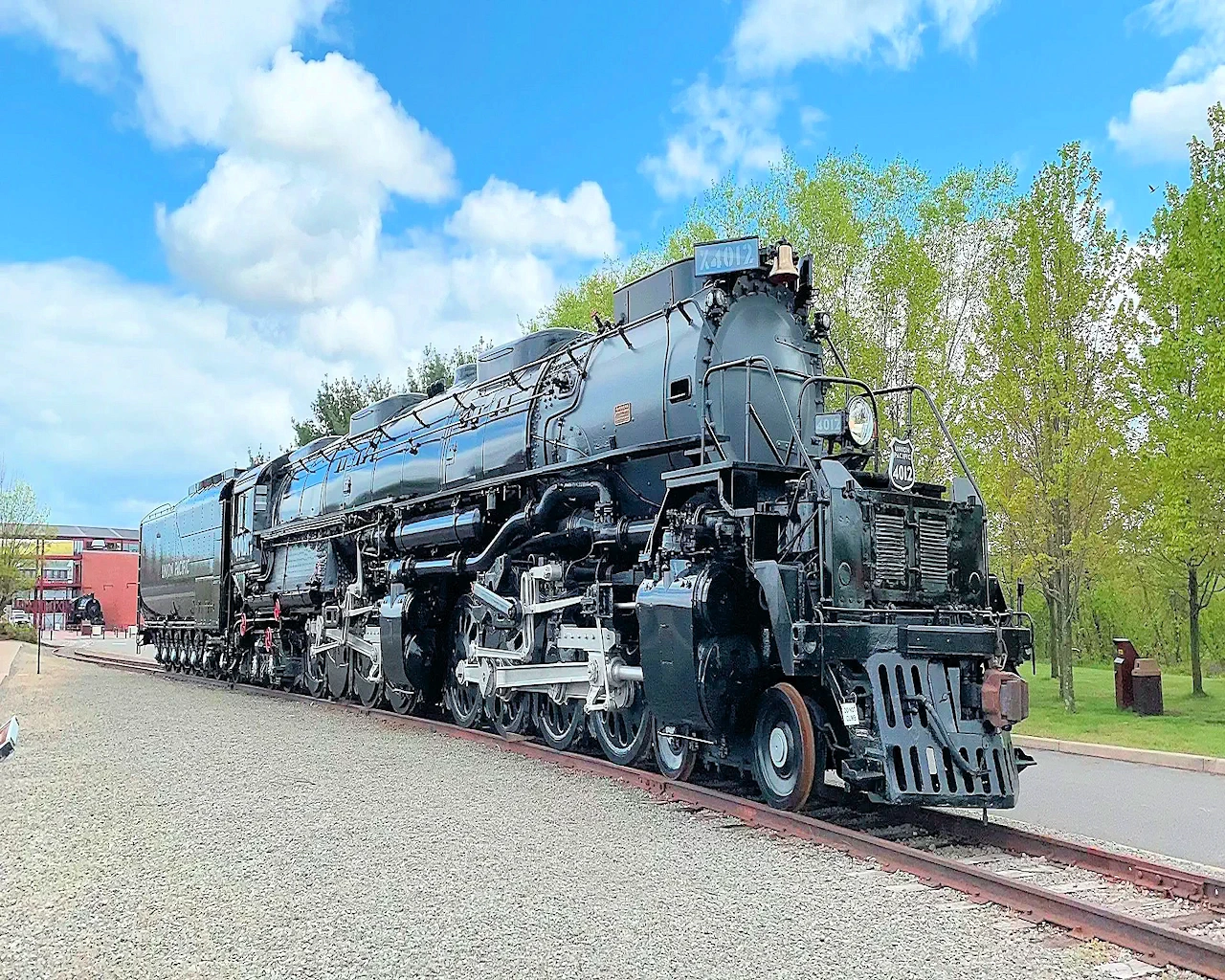Steamtown in Scranton, Pennsylvania
Steaming Through History: Exploring the Railroads at Steamtown National Historic Site
by Celeste Lipford and Terry Lipford - last updated on 1/6/2025
We were on our way to New England to visit family, and decided to spend the night in Scranton, PA. This allowed us to not have to drive 7 additional hours and so we were able to visit the Train Museum at Steamtown. At Steamtown, we were able to explore an impressive collection of historic locomotives, railcars, and other artifacts. The site offers a comprehensive glimpse into the intricate workings of steam-powered trains, allowing enthusiasts and curious visitors alike to appreciate the engineering marvels of the past.
How to get to Steamtown: We were staying at the Hilton Scranton & Conference Center on Adams avenue, so we drove to Spruce Street, left on Mifflin avenue, right onto Lackawana avenue, left onto Cliff avenue and then followed the signs to Steamtown. If you are on I-81, you would take the President Biden Expressway exit and proceed to route 11 and Bridge street.
Tips on how to explore Steamtown:
- Guided Tours: Joining a guided tour is a great way to delve into the site's rich history and learn from knowledgeable interpreters. These tours provide insights into the significance of various exhibits and locomotives.
- Train Rides: Don't miss the chance to take a ride on one of the vintage trains. The immersive experience of chugging along the tracks offers a unique perspective on the past.
- Exhibits and Museums: Explore the well-curated exhibits and museums to understand the evolution of steam-powered railroading and its impact on the nation's development.
- Live Demonstrations: Witness live steam demonstrations to see the engineering marvel of these majestic locomotives in action.
- Ranger Programs: Engage in the ranger-led programs, which often include talks, demonstrations, and interactive activities for visitors of all ages.
- Plan Ahead: Check their schedule for special events, themed days, and operating hours of the trains to ensure you make the most of your visit.
- Comfortable Attire: Wear comfortable walking shoes and dress appropriately for the weather, as you'll likely spend a considerable amount of time exploring the expansive site.
The site is run by the National Park Service and there are rangers in various areas to answer your questions or provide you with additional information.
Union Pacific 4012
The Union Pacific 4012 engine, also known as the Big Boy, is a legendary steam locomotive that holds a special place in railroad history. Built in 1941 by the American Locomotive Company, it was part of the Union Pacific Railroad's fleet of massive articulated steam locomotives designed for hauling heavy freight trains over long distances. The Big Boy locomotives were the largest steam engines ever built, measuring over 132 feet long and weighing over 1.2 million pounds. With a 4-8-8-4 wheel arrangement, they boasted immense power and pulling capacity.
One of 25 built, No. 4012 is one of eight of its type to survive the advent of the diesel era. Referred to as an "articulated" locomotive, because it has more than one set of drivers, Big Boy weighs 1,250,000 pounds (570,000 kg). This locomotive worked for 21 years hauling freight between Cheyenne, Wyoming, and Ogden, Utah, logging over 1,000,000 miles (1,600,000 km) before its retirement in 1962.
In 1923, the "Big Boy" emerged from the fires of American industrial might. Designed to conquer the treacherous grades of the Rocky Mountains, this behemoth boasted unmatched power and sheer size. Its boiler housed a furnace the size of a small house, and its wheels pounded the tracks with the force of a battering ram.
For decades, the 4012 reigned supreme over the rails. It hauled heavy freight through blizzards and scorching heat, connecting communities and fueling the nation's industrial engine. Its rhythmic chug, a hypnotic song of steel and steam, became a familiar melody across the American landscape.
The 4012's story isn't just about power and speed. It's also a testament to American resilience. During World War II, these "Big Boys" became the unsung heroes of the home front, hauling vital war supplies across vast distances. They kept the wheels of industry turning and played a crucial role in securing victory.
More Info for Steamtown
Image Credits:
- Image # 2 property of Fan Railer via Wikimedia Commons using the CC BY-SA 4.0 license.
- All other images (unless otherwise noted) are the property of Just Traveling Thru, LLC.
Train Round House Turntable
The Steamtown Roundhouse in Scranton, Pennsylvania, is a striking and iconic structure that serves as a powerful reminder of the golden age of steam locomotives. Situated at Steamtown National Historic Site, it stands as both a historical artifact and a celebration of America’s rich railroad heritage. The roundhouse, with its impressive 22-stall design, played a crucial role in the maintenance and repair of steam engines during the height of rail transportation.
Historically, roundhouses were essential facilities for servicing locomotives, allowing trains to be cleaned, repaired, and turned around using a central turntable. The Steamtown Roundhouse is no exception, having been a vital part of the Delaware, Lackawanna & Western Railroad's operations. Today, it remains one of the few surviving roundhouses in the country and has been meticulously preserved to offer visitors a glimpse into the past.
Visitors to Steamtown can explore the roundhouse and see firsthand how it functioned during its heyday. The turntable, a rotating platform that aligns locomotives with the appropriate stalls, remains fully operational and is frequently demonstrated as part of the site's educational programs. Inside the roundhouse, various historic steam locomotives and railcars are on display, allowing visitors to appreciate the craftsmanship and engineering of these powerful machines.
IMAGE CREDITS
- The large Round House Turntable image is the property of Stilfehler via Wikimedia Commons and the GNU Free Documentation License
- Image # 2 property of National Park Service via Wikimedia Commons using the Public Domain license.
- All other images are the property of Just Traveling Thru, LLC unless otherwise noted.
Round House
When the Steamtown Park was under development, the National Park Service decided to use the existing portions of the Roundhouse (dating from 1902, 1917, and 1937) as a part of the Museum Complex, while adding a Visitor Center, Theater, Technology Museum, and History Museum. The Roundhouse was adaptively rehabilitated to allow Steamtown's mechanics to care for the locomotives with light-duty maintenance and repairs.
In the center area of the round house, there is a "turn table" that allowed the Railroad engineers to bring in equipment and then be able to select which round house shop the equipment would be placed into. The round house is essentially a number of large "garages" where repairs or maintenance work took place.
More Info for the Steamtown National Historic Site
- Steamtown National Historic Site Wikipedia Article:
- Steamtown National Historic Site Google Images Set:
- Our Image Gallery for Steamtown National Historic Site:
- Google Reviews for the Steamtown National Historic Site
- Google Search Results list for "restaurants near Steamtown National Historic Site"
- The creation of some portions of this page's narrative text were assisted by OpenAI. (2025). ChatGPT [Large language model].
Note: All images featured on this page are the exclusive property of Just Traveling Thru, LLC, unless otherwise stated. When images from external sources are used, full credit is given to the original creator, along with a link to the specified license or usage terms. We are committed to respecting copyright and intellectual property rights, ensuring that all third-party images are properly attributed. If you have any questions regarding image ownership or usage rights, please feel free to contact us.
To review any of our content, make suggestions and/or comments, please click the "About" menu link at the top of this page. You will find our "Contact Us" link on that drop-down menu.



















